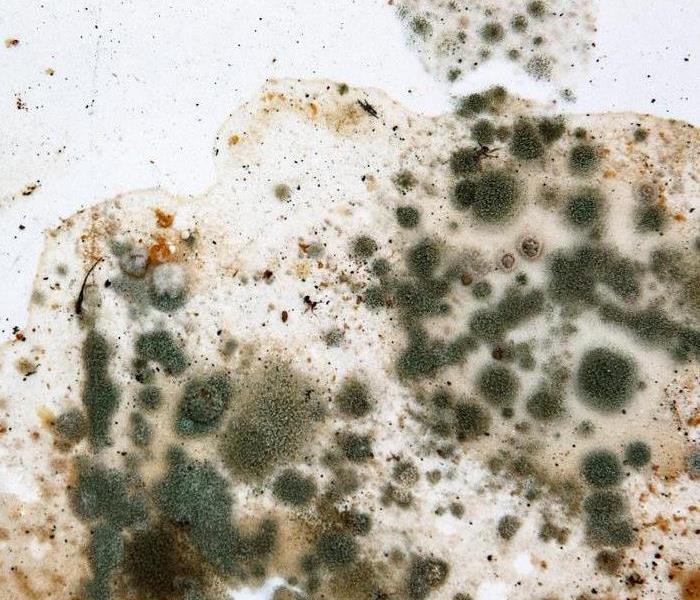How Does Mold Get Into the Fridge?
7/28/2020 (Permalink)
You’re in the mood for a grilled cheese sandwich, but then you discover it: bread mold. The loaf was in the refrigerator, so how did this happen? As a homeowner in Lockport, IL, how do you know which kinds of mold are nontoxic and when to call a mold remediation specialist? Here are a few interesting facts about mold.
1. Most mold you come across is harmless. Just like that fuzzy bread, most fridge mold, while annoying, isn’t usually a major health concern. You might consider just cutting off the moldy section, but spores can be present even in the parts that appear unaffected. To prevent that moldy taste from ruining your dinner, wrap the item in plastic and dispose of it out of reach of children and pets.
2. Mold is part of the natural decomposition cycle. Organisms in the fungi kingdom, such as mushrooms and mold, break down deceased plant and animal life in the wild. They reproduce by microscopic spores that travel by air current, and they can arrive indoors by open windows, HVAC systems, and on surfaces like clothing or pet fur. Most indoor fungus (like bread mold) isn’t a problem for healthy people because the levels are low enough to remain innocuous.
3. Mold doesn’t need light to grow. Unlike houseplants, mold doesn’t require a natural light source to thrive indoors. Instead of converting sunlight to chlorophyll, mold spores feed on the substance they land on — whether that’s your favorite cheese or the drywall under the sink. Dark, damp conditions are ideal for fungus growth, which is why you often encounter it in the bathroom, basement or anywhere water is found. Attempting to clean these areas yourself could make the issue worse, so it’s best left to the experts.
The next time you see mold in your home, you’ll be prepared to take the right course of action. If it’s bread mold or mold found on other food, throw it out. And if you find mold on the floor or walls of your home, it’s time to call in a professional.



 24/7 Emergency Service
24/7 Emergency Service
